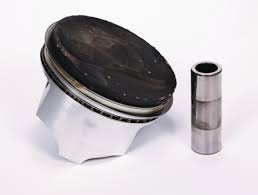Frequently we are asked about fuel-based carbon cleaners. Specifically, what happens to carbon deposits that are removed through the use of fuel cleaners, and can these cleaners damage an engine?
Let’s begin by discussing the first part of that question.
Within the fuel system, you’ll seldom find carbon itself. You will likely discover sludge, gum, varnish, debris, and similar deposits. The fuel filter captures the larger deposits. These and other deposits that have found their way through the fuel system usually are dissolved and dispersed in a controlled and manageable way using dispersal-based detergents. That’s why it is important to use additives at the recommended dosage so that deposit removal is completed in a controlled manner. High-strength fuel system cleaners that carry out this process typically contain a lubricant to ensure the entire system is lubricated during the cleaning procedure. This too, minimizes the risk of any issues.
Most actual carbon formation occurs in the combustion chamber and post-combustion areas. This includes the turbo’s hot side, intake, inlet valves, EGR, catalytic convertor, DPF, and the remainder of the exhaust tract. The reason why carbon remains is that there is insufficient heat to burn it off. Chemically, a liquid hydrocarbon fuel – such as gasoline or diesel – is very similar to the solidified fuel (carbon) it creates. The difference is that a higher temperature must be reached to ignite and burn solid carbons because the flash point has changed.
High-quality fuel detergents, combined with fuel catalyst technology, reduce the threshold temperature at which the carbons can burn, enabling natural engine processes and inherent heat to gradually “burn off” the deposits. This is undoubtedly the case for combustion chamber deposits.
Sometimes there also is a degree of active cleaning from any cleaning chemistry that can survive the combustion process and thus is still active post combustion. However, as described above, most carbon is removed by reducing the temperature at which it can burn.
It is important to note that there also is a natural cleaning mechanism. When the combustion process is of sufficient quality – generally through an efficient fuel system (no injector deposits), good fuel quality (more often than not, only achieved with fuel conditioners), and an engine that is up to full operating temperature – engines are designed to self-manage carbon build-up. The clean(ish) gases will naturally remove carbons to maintain a respectable level.
The issue arises when this equilibrium is broken, and more carbons are deposited than can be naturally removed. This could be due to a flawed engine design, poor fuel quality, fuel system deposits, driving style, failure to let the engine reach the proper temperature, etc., or a combination of these.
This is why catalyst technology is so vital in carbon cleaning and for keeping a system clean. When a catalyst is added to the fuel, it improves the combustion quality to such a degree that it reduces the amount of hydrocarbons created, particularly when the engine is cold. These cleaner gases then work together with the active work the catalyst is doing to reduce the temperature at which these deposits can burn and be removed.
Essentially, a high-end fuel cleaner and carbon remover provide an environment where the combustion quality is much better, and the exhaust gasses are much cleaner. The cleaner exhaust gasses will naturally scavenge and remove carbons from the combustion and the post-combustion areas. The caveat is that this process requires heat. The catalyst will reduce the temperature at which the carbons can be removed and burned off, but it also needs heat.
This is why it is tough for such chemistries to clean the EGR system. The problem is that an EGR and intake are designed to cool recirculating exhaust gasses. Doing so reduces the efficacy of any post-combustion cleaner or chemistry. Unfortunately, this also applies to the rear of the intake valves of direct poor injection engines. Those two areas are challenging to clean because the gasses going through are cooled.
Also, it is difficult to remove existing deposits in these areas. However, by using a high-quality conditioner with the fuel catalyst in both diesel and petrol applications, you’ll at least give the engine and emission control components a much easier life. This is because the engine and emissions systems will have fewer carbons to manage. This results in fewer deposits and hopefully removes the need to use high-strength cleaners or invasive measures to remove carbons manually.
What about the safety of cleaners and the risk of the fuel system or engine damage?
Providing products are used as per the instructions, the risk of any damage is incredibly low. The few rare cases of alleged damage we have witnessed weren’t caused by a product. The product just revealed or exacerbated an underlying mechanical issue with the fuel system. Still, this is incredibly rare.
Furthermore, manufacturers err on the side of caution, so even if a product is used aggressively or improperly, it is still likely to be safe to use up until a certain point.
To summarise, fuel system deposits are generally dissolved, dispersed, and combusted naturally. Carbon is usually combusted through heat and an added fuel-borne catalyst. These processes are proven safe when used correctly and responsibly.




 categories
categories